#foodways
Text
Look what Google just recommended to me!!!!
I already own (and love) Shabbat and Portico.
But I am OBSESSED with the rest and must acquire them immediately.
Top of my list is Love Japan because LOOK AT THIS BEAUITFUL BOWL OF MATZO BALL RAMEN!!!!!

We hear a lot about Jewish people in Europe and MENA, but we do not hear a lot about Jewish culture as it blends with East Asian cultures, and that’s a shame. Not just because it erases the centuries of Jewish populations there, but also because there are plenty of people of mixed decent. People who may not have come directly from Jewish communities in East Asia, but people who have a Japanese Father and a Jewish Mother, for example. Or people in intercultural marriages. These are all real and valuable members of the Jewish community, and we should be celebrating them more. This cookbook focuses on Jewish Japanese American cuisine and I am delighted to learn more as soon as possible. The people who wrote this book run the restaurant Shalom Japan, which is the most adorable name I’ve ever heard. Everything about this book excites and delights me.
And of course, after that, I’m most interested in “Kugels and Collards” (as if you had any doubts about that after the #kugel discourse, if you were following me then).

This is actually written in conjunction with an organization of the same name devoted to preserving the food and culture of Jews in South Carolina!
I’m especially excited to read this one, because I have recently acquired the book Kosher Soul by the fantastic, inimitable Michael J. Twitty, which famously explores faith and food in African American Jewish culture. I’m excited to see how Jewish soul food and traditions in South Carolina specifically compare and contrast with Twitty’s writings.
I’m also excited for all the other books on this list!
A while ago, someone inboxed me privately to ask what I recommended for people to read in order to learn more about Jewish culture. I wrote out a long list of historical resources attempting to cover all the intricate details and historic pressure points that molded Jewish culture into what it is today. After a while I wrote back a second message that was much shorter. I said:
Actually, no. Scratch everything I just said. Read that other stuff if you want to know Jewish history.
But if you want to know Jewish culture? Cookbooks.
Read every Jewish cookbook you can find.
Even if you don’t cook, Jewish cookbooks contain our culture in a tangible form. They often explain not only the physical processes by which we make our meals, but also the culture and conditions that give rise to them. The food is often linked to specific times and places and events in diaspora. Or they explain the biblical root or the meaning behind the holidays associated with a given food.
I cannot speak for all Jews. No one can. But in my personal observation and experience—outside of actual religious tradition—food has often been the primary means of passing Jewish culture and history from generation to generation.
It is a way to commune with our ancestors. I made a recipe for chicken soup or stuffed cabbage and I know that my great grandmother and her own mother in their little Hungarian shtetl. I’ll never know the relatives of theirs who died in the Holocaust and I’ll never meet the cousins I should have had if they were allowed to live. But I can make the same food and know that their mother also made it for them. I have dishes I make that connect me to my lost ancestors in France and Mongolia and Russia and Latvia and Lithuania and, yes, Israel—where my relatives have lived continuously since the Roman occupation even after the expulsions. (They were Levites and Cohens and caretakers of synagogues and tradition and we have a pretty detailed family tree of their presence going back quite a long time. No idea how they managed to stay/hide for so long. That info is lost to history.)
I think there’s a strong tendency—aided by modern recipe bloggers—to view anything besides the actual recipe and procedures as fluff. There is an urge for many people to press “jump to recipe” and just start cooking. And I get that. We are all busy and when we want to make dinner we just want to make dinner.
But if your goal isn’t just to make dinner. If your goal is to actually develop an understanding of and empathy for Jewish people and our culture, then that’s my advice:
Read cookbooks.
#Judaism son#Jewish culture#Jewish cuisine#culinary tradition#culinary history#foodways#cultural preservation#tangible culture#jumblr#Judaism#food#cuisine#kugel discourse#Jewish joy#jewish positivity#Jews around the world#East Asian Jews
148 notes
·
View notes
Text
#indigenous#native american#apache#ancestors#ancestral knowledge#food#foodways#indigenous food#unci maka#grandmother#elders
80 notes
·
View notes
Text

I made an authentic 1910s recipe on Armistice Day today: originally published in The Bayonne Herald and Greenview Register in 1915, and shared on Bluesky by Kristy Baxter.

It took about 17 minutes at 450 F for gooey but not very runny eggs, adjust to your preferences. I have experimented with oven roasted tomatoes for English Breakfast, and I find that they always need more time in the oven.
For seasoning, I used salt, pepper, powdered garlic, dried herbs, and a dash of adobo seasoning. More fresh grated pepper and some parmesan cheese were excellent additions to the cooked eggs, I will definitely make 1915 Eggs in Tomatoes again.

#1910s#food#culinary history#cooking with shaun#recipe#historical cooking#great war era#1915#œuf cocotte en tomate#eggs in tomatoes#foodways#traditional recipes#described#blue willow#chinoiserie#traditional food
65 notes
·
View notes
Text
I come from a long line of people who raised hogs, smoked them in the earth as technique inherited from indigenous kin (who - more broadly - introduced the west to the method: more on that here!) and seasoned them beautifully.
so pork specifically meant a lot to my family... but it is also undeniably tied to hereditary health problems...
so here's a story on how we departed from that, what tradition even is, and what it means to me now ft the humble black eyed pea, for EATER!
some of my favorite panels:


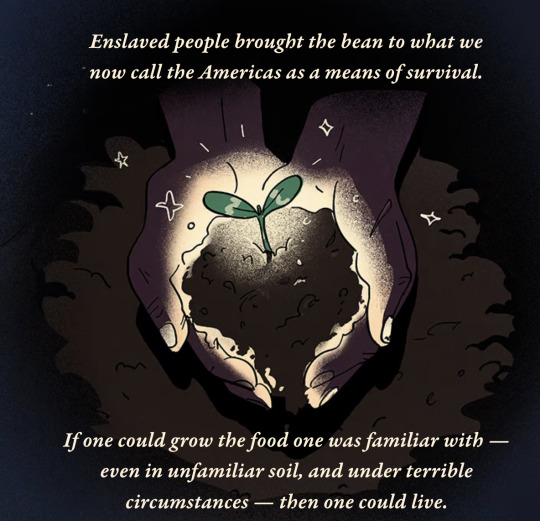
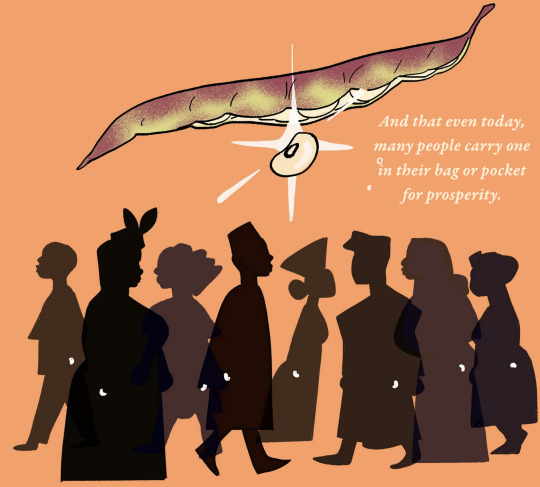
find the recipe for Yoruba àkàrà in my new book, COOK LIKE YOUR ANCESTORS <3
#art#comic#comics#illustration#cartoon#love#food#africa#african american#foodways#native#indigenous#barbecue#black eyed peas#heirlooms#mariah-rose marie#cook like your ancestors
36 notes
·
View notes
Text
Folklore Week!
August 22nd is World Folklore Day, so we're bringing to you a sampling of our extensive folklore collection this week. Folklore studies, while pre-dating popular culture studies, is an important aspect of what we preserve at the Browne Popular Culture Library, since it seeks to learn about everyday people and how what we find significant is transmitted across time and space.
"Foodways" is the term used to describe the cultural practices around making, sharing, and eating food. Among our various books on foodways is the American Folklore Society's Digest: An Interdisciplinary Study of Food and Folkways (1991-1995), which the Department of Popular Culture Studies here at BGSU has been involved in at times. It features articles, reviews, photoessays, and calendars of important food festivals and conferences. Here are the covers of the four issues we keep in our collection:
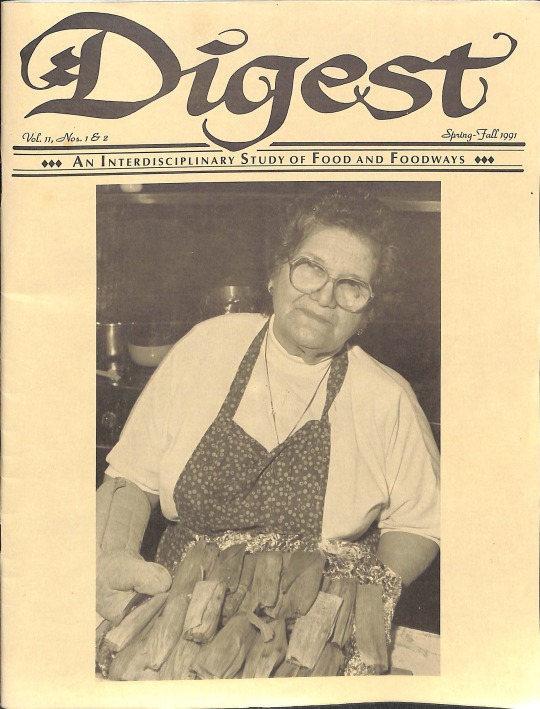



The journal was relaunched in 2012 under the name Digest: A Journal of Foodways and Culture, and can be found at https://scholarworks.iu.edu/journals/index.php/digest/index. Its articles are open source, so consider checking them out!
The Browne Popular Culture Library (BPCL), founded in 1969, is the most comprehensive archive of its kind in the United States. Our focus and mission is to acquire and preserve research materials on American Popular Culture (post 1876) for curricular and research use. Visit our website at https://www.bgsu.edu/library/pcl.html.
15 notes
·
View notes
Text
(I do want to say, generally speaking, that I know polls about "what is your favorite food that other people would consider weird" are all fun and games and all; and this is not about the poll I reblogged just now, per se. But... what people are going to fast discover is that polls that heavily imply "which of these foods is the yuckiest?" are a not-very-steep slope away from being really, really racist. Or classist; or both.
"HA HA THE FOOD YOU LIKE / GREW UP WITH IS WEEEEEEIRD AND GROSS!" is not a great look on anyone. Especially when an awful lot of people have no idea about the origins of various regional foods.)
16 notes
·
View notes
Text
Restaurateur Thomas Downing, the New York Oyster King

Thomas Downing (1791–1866) was an American restaurateur and abolitionist active in New York City during the Victorian era who was nicknamed the "New York Oyster King". He was one of the wealthiest people in New York City at the time of his death, though he spent his life being prohibited from acquiring U.S. citizenship until the Civil Rights Act of 1866 was passed, the day before he died.
Thomas Downing was born in Chesapeake Bay on Chincoteague Island, Virginia. His parents were enslaved, and eventually freed, by Sea Captain John Downing after learning that owning slaves was not condoned by the Methodist Church. They adopted the name "Downing" as their own and began working as paid caretakers of Captain Downing's Methodist Meeting House. Eventually, they bought some property on the Island and the family began earning extra money by gathering and selling oysters, as well as other seafood, such as clams and fish. Thomas was raised alongside his wealthy neighbors and shared the same tutor as their children. One of his tutors was Henry A. Wise, who went on to become the Governor of Virginia (1861–1865).

Thomas Downing grew up on Virginia’s Chincoteague Island, where his family made their living from the sea by fishing, clamming, and raking oysters. The skills Downing acquired during his childhood carried him to Philadelphia—he’d followed the troops North after the War of 1812—where he spent seven years running an oyster bar.
In the 1820s, most registered oystermen were African American, and opportunity in the industry was abundant, especially for people like Downing, who came from oyster-rich states along the Chesapeake Bay like Virginia. But the world’s oyster capital was New York City, and Downing moved there, spending his days on a schooner harvesting oysters from the beds of the city’s waters and selling them to restaurants or on the streets.

At the end of the War of 1812, Thomas joined the United States Army and followed it to Philadelphia. There he met and married his wife, freeborn Rebecca West, and they had five children: George, Thomas, Henry, Jane, and Peter. Thomas worked as a valet, continued oystering, and, wanting more out of life than oyster digging, he eventually opened his first oyster bar. This allowed him to keep ties with his family's roots while establishing his new career as an esteemed businessman. Thomas used his knowledge of oystering to his advantage and used his connections to the fisherman to sell the best oysters around.
Source: Wikipedia, Fishers Island Oyster Farm, Atlas Obscura
Visit www.attawellsummer.com/forthosebefore to learn more about Black history and read new blog posts first.
Need a freelance graphic designer or illustrator? Send me an email.
#Thomas Downing#New York Oyster King#seafood#New York’s Black Oyster King#New York history#Black history#history#Black culinary history#Chesapeake Bay#New York City#Virginia#Henry A. Wise#foodways#African American foodways#Rebecca West
0 notes
Text
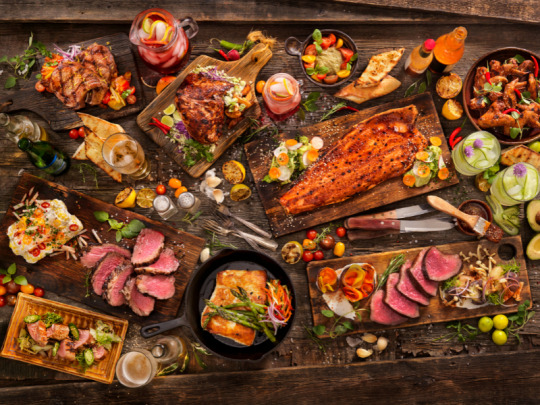
Spring has finally sprung in these parts with the vernal equinox transpiring at 11:06pm on Tuesday, as the Earth’s upright tilt bequeathed us with a virtually identical length of day and night. From this point on, we can expect to bask in an extra three minutes of glorious sunlight per day here in the northern hemisphere.
As we burst forth from our metaphorical hibernation into the warmth of the accelerating sunshine, the spring season is welcomed as a time of renewal, rebirth and fresh beginnings. Thanks to this year’s mild winter, a springtime rejuvenation is already underway at our bustling farmstalls with several early arrivals like tender pea shoots, frilly lettuce and leafy bok choy trickling onto the scene.
Coinciding with the advent of spring is a confluence of significant cultural and religious holidays that are each associated with traditional meals, reflecting their distinct geographic affiliations and historical foodways. Fortunately, your local Down to Earth farmers market remains well-stocked with plenty of trusty winter stalwarts, as well as some early season newcomers, for you to incorporate in your springtime feasts and celebratory dishes both this weekend and next.
Purim Seudah
The festival of Purim will take place from sundown this Saturday through sundown on Sunday. Purim is a joyous, fun and lively holiday commemorating Queen Esther’s saving of the Jewish people of ancient Persia by preventing their annihilation at the hands of Haman, King Ahasuerus’ wicked prime minister. Purim is typically observed by readings of the biblical book of Esther (Megillah), making charitable donations, sharing gifts of food with friends, and partaking in a special festive seudah banquet with loved ones.
It’s customary to serve foods at the Purim seudah that are inspired by symbolic links to the Megillah. Queen Esther is said to have eaten a vegetarian diet in order to keep kosher while living in her husband King Ahasuerus’s palace. Thus, Purim menus worldwide typically feature an array of beans, seeds, legumes, nuts and dried fruits. Feed directly into this ancient tradition with a generous platter of crudité featuring ready-cut celery, carrots, radishes and other crunchy veggies from 4E Green Farm to dip in a tub of Taiim Shack Mobile’s seasonally flavored, creatively crafted hummus. Like Queen Esther, hummus hails from the Middle East where it’s traditionally made by blending chickpeas with tahini, lemon juice and garlic. Or how about a dish of pre-seasoned, ready-to-cook lentils from The Lentil Co. who've taken the work out of preparing lentils so you can enjoy a relaxed and delicious seudah with your family.
Iftar Ideas
Ramadan occurs during the ninth month of the Islamic calendar when it’s believed the first verses of the Holy Book of Quran were sent down from heaven and revealed to the Prophet Muhammad. This holiest of month for Muslims began on March 12th this year and is a time for fasting, introspection, prayer, and performing acts of charity and kindness.
Ramadan fasting is one of the five pillars of Islam and requires abstaining from food and drink from sunrise to sunset. Iftar is the fast-breaking evening meal that customarily commences with a bite of a fresh or dry date then moves onto a feast of traditional foods. This simple and tasty Chicken Shawarma recipe makes a fortifying iftar given its combination of nutritious and satiating ingredients that are easily sourced from the farmers market during the seasonal transition.
Ingredients
2 tablespoons garlic paste (Great Joy Family Farm garlic blended in a food processor with olive oil or water)
¾ cup extra virgin olive oil, divided
2 teaspoons kosher salt
Spices (1 tablespoon each of turmeric, cinnamon, freshly ground black pepper, cumin, smoked spicy paprika)
1½ tablespoons lemon juice
2½ pounds Roaming Acres or Yellow Bell Farm boneless chicken thighs or breasts, cut into 1-inch strips
1 large Jersey Farm Produce white onion, thinly sliced
Pita bread from Taiim Shack Mobile and/or 4E Green Farm bibb lettuce
4E Green Farm red cabbage, sliced
Torn cilantro, parsley and mint from Jersey Farm Produce
Harissa sauce
Easter Feasts
Easter, also called Pascha or Resurrection Sunday, is a Christian festival and cultural holiday commemorating the resurrection of Jesus on the third day after his Crucifixion. After attending a church service, Easter Sunday is traditionally celebrated over a large meal featuring meat, potatoes, vegetable side dishes and dinner rolls.
In preparation for next week’s Easter extravaganza, Down to Earth meat vendors will bring holiday ham, pastured chicken and spring lamb; the farmstalls will have plenty of root veggies and fresh greens; and our chocolate and baked goods vendors will make specialty items such as decorated holiday-themed cookies.
To wrap things up as we warmly embrace the outset of spring, there’s no shortage of occasions and reasons to head to your farmers market this weekend. We’ll have a diverse abundance of seasonally appropriate items for you to bring to the table at whatever event or holiday it is that you may be celebrating. We look forward to seeing you at the market!
#downtoearthmkts#farmersmarket#eatlocal#shoplocal#buylocal#localfood#farmersmarkets#eatdowntoearth#purim 2024#ramadan 2024#easter 2024#foodways#springtime
0 notes
Text
“An 1860 issue of Hutchings’ California Magazine listed onions as one of the “necessities” for an eight-day journey into the mountains."
1 note
·
View note
Text
Local Cuisine
Daily writing promptWhat food would you say is your specialty?View all responses
The world of cuisine is a world centered on colossal pilferage. A saying in the social sciences sums it up: “If you steal from one, it’s plagiarism; if you steal from many, it’s research.” So, the world of food must be one of the most thoroughly researched in history because no national cuisine seems genuinely local…
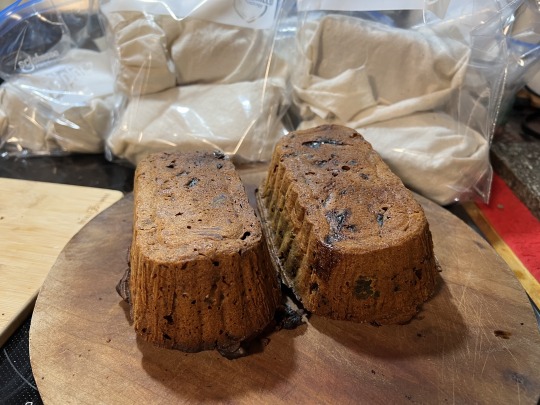
View On WordPress
#fowc#dailyprompt#dailyprompt-2100#foodways#Ragtag Daily Prompt#RDP#Word of the Day Challenge#your daily word prompt
0 notes
Text
Ep. 21-Climate Action - Laura Lengnick, Meredith Leigh
Reading & Writing Resilience: After the hottest week on Mother Earth on record, Laura Lengnick, author of Resilient Agriculture, and Meredith Leigh, author of the Ethical Meat Handbook, join Martha in the studio to discuss what we can do about it.
Reading & Writing Resilience
After the hottest week on Mother Earth on record, Laura Lengnick, author of Resilient Agriculture, and Meredith Leigh, author of the Ethical Meat Handbook, join Martha in the studio to discuss what we can do about it.
To guide our conversation, we talk about Laura’s list of twelve things that we can each do to be part of adapting and responding to climate change and…
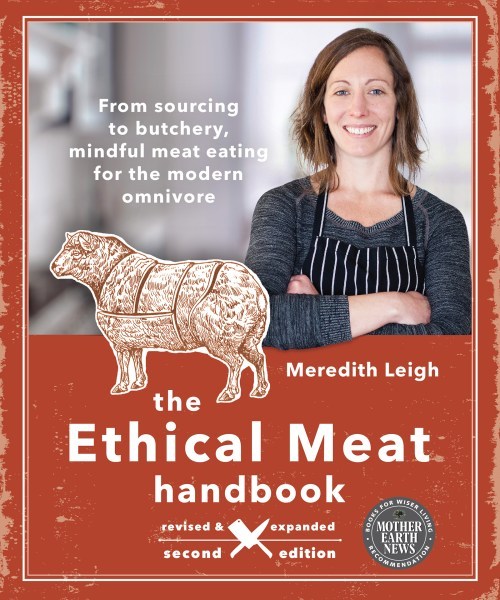
View On WordPress
#ancestral knowledge#climate change#climate resilience#community#ethical meat#fermentation#food waste#foodshed#foodways#Laura Lengnick#Meredith Leigh#Poetry#regional foodshed#regional foodway#spoken word
0 notes
Text
Sorry I couldn't return your call; I am mentally, emotionally, and all levels besides physically present at the Siege of Fort Meigs in 1813.

I keep thinking about the inventory of the effects of Captain Asabel Nearing deceased, of the 19th Regiment United States Infantry, who died at Fort Meigs Sept. 10, 1813.
It's mostly clothing, as you would expect, with some shaving and writing supplies. There are also two food items: "1 small bag of black pepper" and "2 nutmegs." Not unlike my late grandmother, Captain Nearing apparently had his own personal food-seasoning kit.
The pepper is unremarkable, but the nutmegs are very interesting to me because he was almost certainly using them on savoury food! Look up 18th century and early 19th century cookbooks: there is nutmeg used on beef, veal, mutton, mushrooms, etc.
Thanks to my War of 1812-themed cookbooks like The Fort George Bill of Fare and Setting A Fine Table: Historical Desserts and Drinks from the Officers' Kitchens at Fort York, I have tried savoury nutmeg dishes—and they're really interesting and good! I don't know why (Western) cookery now treats nutmeg as a spice only for sweetened desserts. It's wild to think that Captain Nearing may have been grating fresh nutmug on his salt pork or wild game.
#war of 1812#fort meigs#culinary history#foodways#us army#nutmeg#food#mentally trapped at fort meigs is just a fancy way of saying 'haha now you are stuck in ohio'#1810s
30 notes
·
View notes
Photo

If you know him then you know that he is a stickler for getting actual measurements (I am not) and M writes them in plain language to make it much simpler to follow the recipes than other cookbooks. In our family we believe food should be simple, approachable, and unpretentious. Meals around The Compound and our home aren’t instagram aesthetic, yet I promise, if try the recipes you’ll be glad you did. Generations of recipes that sustained our family all neatly packed in his book with just a touch of his trademark dry humor. It’s more than a cookbook, it also contains a few of our family canning recipes 🙃🙃. He says his next undertaking will be to extract all the canning recipes from the family books of wisdom and letters left behind by the ones who went ahead to Heaven before us. Farm ledgers and family garden and food way journals have been kept in many families for many generations. We just happen to still have ours. . . . . . . . . #familyjournal #farmjournal #farmledger #familybook #familyrecipes #familyrecipe #heirloomrecipe #heirloomrecipes #gardening #farming #foraging #foodways #heirloomseeds #heirloomvegetables #familyheirlooms #cooking #homecooking #cookingram #lovecooking #ilovecooking #cookingclass #cookingtime #cookingathome #cookingwithlove #easycooking #homemadecooking #instacooking #cookingvideo https://www.instagram.com/p/CqS9CEkOvLN/?igshid=NGJjMDIxMWI=
#familyjournal#farmjournal#farmledger#familybook#familyrecipes#familyrecipe#heirloomrecipe#heirloomrecipes#gardening#farming#foraging#foodways#heirloomseeds#heirloomvegetables#familyheirlooms#cooking#homecooking#cookingram#lovecooking#ilovecooking#cookingclass#cookingtime#cookingathome#cookingwithlove#easycooking#homemadecooking#instacooking#cookingvideo
1 note
·
View note
Photo

Life at Haphazard Station looks like it will involve some... er... culinary adventures. I believe the goat stock is from an earlier cheese-making activity that required getting rennet the up close and personal way. Which is fine, because if you're going to eat stuff an animal died for, you should have the grace to get involved when given the chance and open your eyes and own your place in the food web instead of pretending like your food just magically appeared in plastic packaging on a refrigerated shelf out of thin air. Yesterday I made ricotta from water buffalo milk. Yes, there are at least a few water buffalo in south Louisiana. And apparently you can milk them. I had no idea. #foodways #haphazardstation #seraphinstation #homestead #southlouisiana #acadiana https://www.instagram.com/p/CktR9ktrbrP/?igshid=NGJjMDIxMWI=
1 note
·
View note
Text
Why does no one else see my vision for post-war Effie Trinket. Like that woman does NOT become a civil servant, she does not join the ranks of government service. She is 100% New Panem’s first influencer. She was already having her It Girl moment as the escort of District Twelve’s victors beforehand and now there’s public perception that she was this Hunger Games insider playing the long con to dismantle the system from within and paid this great sacrifice for it by being tortured by Snow’s cadre for her efforts. Which is not true at all because she had No Clue what was going on but Plutarch needs new programming to fill all the hours that used to be taken up by Hunger Games related media so he decides to capitalize on Effie having Her Moment. And with people being allowed to travel between districts for the first time in over a generation and newfound freedom of information, there would a nationwide fascination how other people live. Effie ends up with her own lifestyle/travel series where she visits different regions of Panem and even exotic far away places such as “England”. She’s posting beach selfies on Panemstigram to promote her upcoming episode on lobster fishing off District Thirteen’s revitalized coastline.
She even gets her own daytime talk show at one point. She tries (and fails) for years to get Peeta on the show as a guest. Katniss has never watched a single episode.
#Effie trinket#the hunger games#hunger games#thg#you know I went into my drafts for something totally unrelated about my backpacking trip and found this instead#listen I love the hayffie quiet life in 12 fics as much as everyone else but guys. guys.#Effie in an ENORMOUS parka going ice fishing in the upper peninsula#trying SO hard to remain professional and enthusiastic about the ‘quaint’ local customs#when she’s obviously freezing and doesn’t want to be there#Effie watching someone milk a cow with barely concealed horror#Effie in a corn field. Effie in a swamp.#American foodways are so vast and diverse irl and would be in Panem too#it’s like Anthony bourdain parts unknown but it’s with Effie trinket#the comedic potential is off the charts.#and also she could learn so much about the world and have her worldview broadened etc etc#but also influencer Effie. do you see it. do you.
97 notes
·
View notes